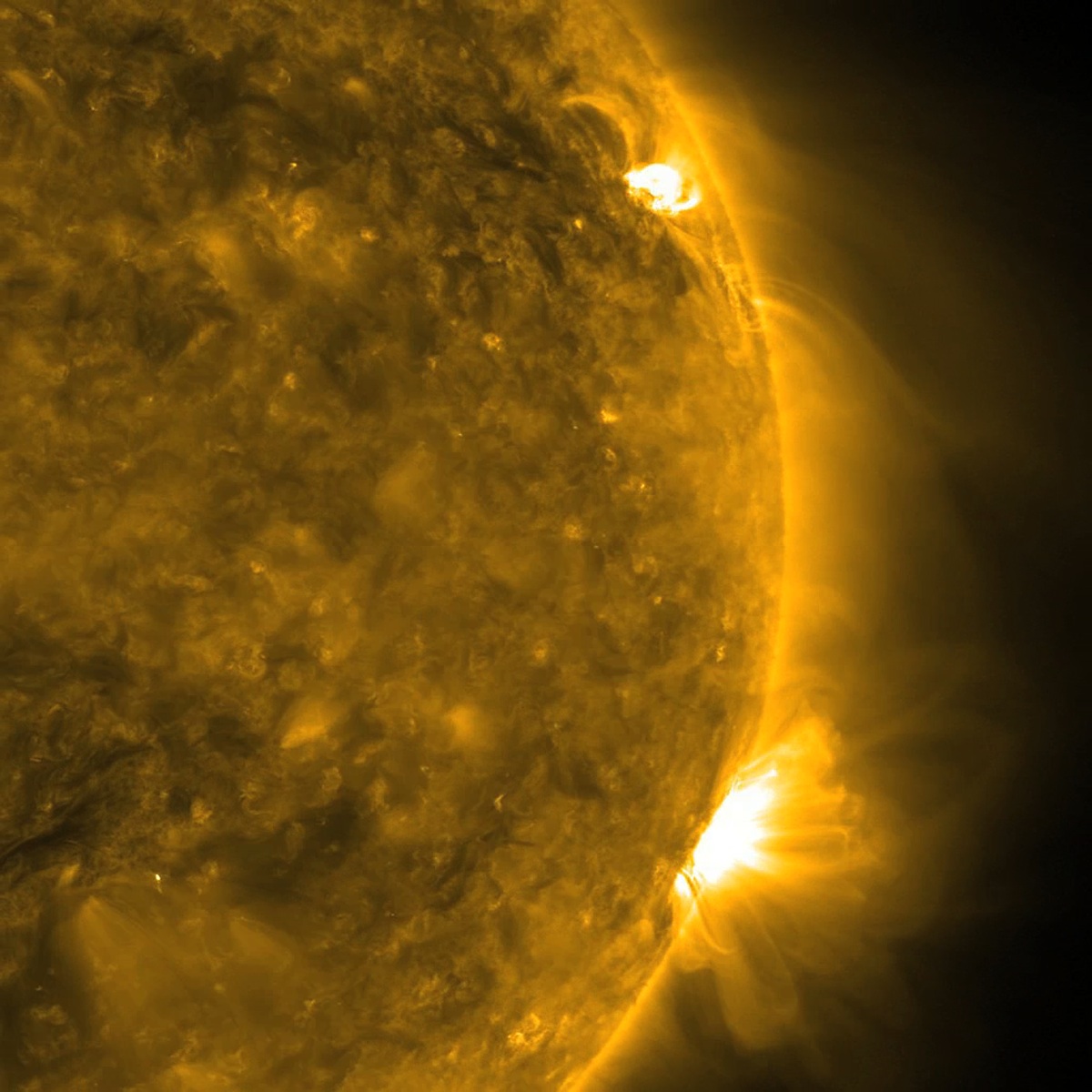Science News
Solar Activity and Climate

Decreased solar activity does not necessarily mean lower temperatures here on Earth. In fact, recent research shows that it could mean exactly the opposite.
Using satellite data from NASA’s Solar Radiation and Climate Experiment (SORCE) satellite, researchers found that between 2004 and 2007, low solar activity actually resulted in more energy and visible light reaching the Earth, warming our climate. The findings are published today in the journal Nature.
Solar activity increases and decreases over a cycle that lasts roughly 11 years. Even after centuries of study, we have only begun to get a complete picture of the process. From a corresponding article in Nature:
Sunspots, dark areas of reduced surface temperature on the Sun caused by intense magnetic activity, are the best-known visible manifestation of the 11-year solar cycle. They have been regularly observed and recorded since the dawn of modern astronomy in the seventeenth century. But measurements of the wavelengths of solar radiation have until now been scant.
Instruments on the SORCE satellite measure the Sun’s energy output at many different wavelengths of light. Researchers fed the data from SORCE into an existing computer model of Earth’s atmosphere and compared their results with the results obtained using earlier, less comprehensive, data on the solar spectrum.
And the results were shocking. From New Scientist:
Previous studies have shown that Earth is normally cooler during solar minima. Yet the model suggested that more solar energy reached the planet’s surface during the period, warming it by about 0.05°C.
This surprising finding led the researchers to believe that the inverse might also be true: in periods when the Sun’s activity increases, it might tend to cool, rather than warm, Earth. But, they warn, more data are needed.
Joanna Haigh, an atmospheric physicist at Imperial College London and lead author of the study, said:
These results are challenging what we thought we knew about the Sun’s effect on our climate. However, they only show us a snapshot of the Sun’s activity and its behavior over the three years of our study could be an anomaly.
We cannot jump to any conclusions based on what we have found during this comparatively short period and we need to carry out further studies to explore the Sun’s activity, and the patterns that we have uncovered, on longer timescales. However, if further studies find the same pattern over a longer period of time, this could suggest that we may have overestimated the Sun’s role in warming the planet, rather than underestimating it.
In addition, Martin Dameris, an atmospheric scientist at the German Aerospace Center, warns that human activity still lies at the heart of our current warming trend. As quoted in the Nature article:
The findings could prove very significant when it comes to understanding, and quantifying, natural climate fluctuations. But no matter how you look at it, the Sun’s influence on current climate change is at best a small natural add-on to man-made greenhouse warming.